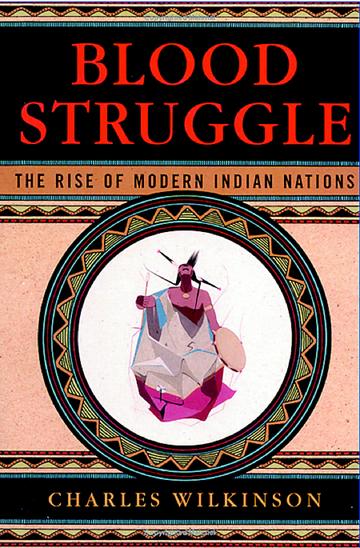The story begins in 1953, the same year “Brown v. Board of Education” reached the Supreme Court, and American Indians, as Wilkinson puts it, were being “left in the dust.” An aging Bureau of Indian Affairs still reigned over a wide and diverse group of populations, controlling tribal budgets and shutting out “troublemakers.” Unemployment among American Indians was 50 percent, and religion had been totally buried. The long process of “assimilation” had ground them down to almost nothing.
Perhaps that had always been the plan—after all, American Indians were sitting on more than 60,000,000 valuable acres of land—an area larger than New York and Pennsylvania put together. As Wilkinson describes, powerful interests had plans for the land. It was Eisenhower's America now, the country in love with building dams, and no flimsy little treaty with a defunct population was going to stand in the way. So Congress began talking about “termination,” which meant—in the crudest of senses—disavowal of old treaties and appropriation of Indian land.
On Aug. 1, 1953, Congress passed House Current Resolution 108, directing the termination of five large tribes and all tribes in four states. Two weeks later, the House enacted Public Law 280, which extended state jurisdiction to many nonterminated reservations and encouraged the states to take over whatever they wished. In one swoop of the pen, all the land and heritage American Indians had fought and died for was signed away.
To pour salt on the wounds, one of the men leading the charge was Sen. Arthur Watkins, the son of Mormon pioneers who had already, generations before, taken American Indian land in the first place. “They want all the benefits of the things we have,” Watkins said, speaking of Indians, not his ancestors, “highways, schools, hospitals, everything that civilization furnishes, but they don't want to help pay their share of it.”
So what did these shiftless, nonworking, responsibility-shirking American Indians do? According to Wilkinson, they eventually did what so many other Americans do when their rights are threatened: They went to court. Over and over again. Blood Struggle is the story of this fight, and it tells a remarkable story indeed. For at the time of this assault on their land and water rights, American Indians were an organizational nightmare, “its members poor, scattered, and small in number,” Wilkinson notes. “Each tribe prided itself on its own distinct traditions, writings were scarce and dissemination difficult. Most important, had the philosophy actually survived?”
As it turns out, in some essential way it had—it just took some time to get organized. And so in the beginning American Indians lost much. In 1957, there was the case of the Seneca, who could not prevent the Kinzua Dam from being built in spite of the fact that 10,000 acres of tribal land would be flooded, uprooting 160 families. And then there was the Garrison Dam and Reservoir Project, which transferred 155,000 acres from the Mandan, Hidatsa and Arikara tribes to the United States.
Gradually, however, victories began to occur. The Sioux successfully mobilized and overwhelmingly rejected a referendum to take their land in parts of South Dakota. The Mohawk boycotted public schools because New York did not allow them to vote in school board elections. In 1969, a group of 80 Indians sailed a ship over to Alcatraz and claimed the land for themselves. “You are Now on Indian Land,” one sign said.
As these stories reveal, Blood Struggle is very much a boots-on-the-ground book, the kind that shirks new journalistic touches to squeeze as many facts as possible onto the page. It involves many state and federal and nongovernmental organizations with acronyms and activists, and obscure legal loopholes, and occasionally tries the powers of a lay reader's attention span.
On the other hand, it's hard to think of another writer besides Wilkinson who could deal with so much material and not sink. A former lawyer for the Native American Rights Fund, he has written a dozen books on the environment, natural resources and the people of the American West, and has visited more than 100 Indian reservations in the past 30 years. On nine pages out of 10 he directs his knowledge lightly, deftly and steers us through more than five decades without turning this book into a docudrama.
As a result, Blood Struggle feels like the culminating work of a lifetime of passionate involvement. Though it occasionally dips into boosterism, the book resurrects an important period of American history—one we are all too proud now to overlook in favor of its end result—and pays homage to the people who have survived for five centuries “under the most excruciating pressure of killing diseases, wars, land expropriation, and official government policy.” They could teach us all a thing or two about our nation's real attitudes toward liberty.









